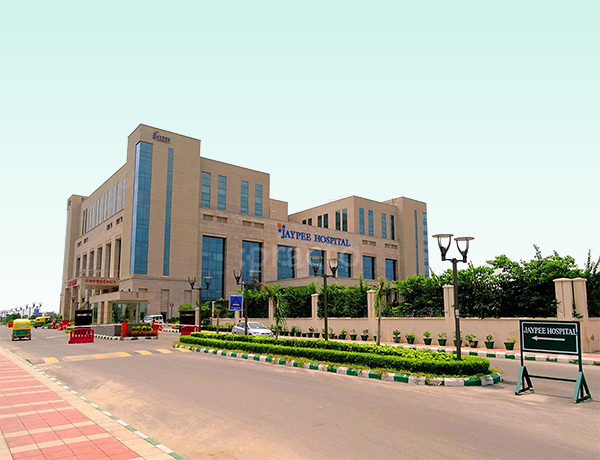Tuberculosis (TB)
Tuberculosis (TB) is a bacterial infection caused by Mycobacterium tuberculosis. It primarily affects the lungs but can also impact other parts of the body. TB is a contagious disease that spreads through the air when an infected person coughs or sneezes. Although curable, TB remains a significant global health concern, and early diagnosis and treatment are essential to prevent its spread and complications.

Types
A TB infection doesn’t always mean you’ll get sick. There are two forms of the disease:
Latent TB. You have the germs in your body, but your immune system keeps them from spreading. You don’t have any symptoms, and you’re not contagious. But the infection is still alive and can one day become active. If you’re at high risk for re-activation — for instance, if you have HIV, you had an infection in the past 2 years, your chest X-ray is unusual, or your immune system is weakened — your doctor will give you medications to prevent active TB.
Active TB. The germs multiply and make you sick. You can spread the disease to others. Ninety percent of active cases in adults come from a latent TB infection.
A latent or active TB infection can also be drug-resistant, meaning certain medications don’t work against the bacteria.
Symptoms
Latent TB doesn’t have symptoms. A skin or blood test can tell if you have it.
Signs of active TB disease include:
A cough that lasts more than 3 weeks
Chest pain
Coughing up blood
Feeling tired all the time
Night sweats
Chills
Fever
Loss of appetite
Weight loss
If you have any of these symptoms, see your doctor to get tested. Get medical help right away if you have chest pain.
Causes
Tuberculosis is caused by bacteria that spread through the air, just like a cold or the flu. You can get TB only if you come into contact with people who have it.
When someone who has TB coughs, sneezes, talks, laughs, or sings, they release tiny droplets that contain the germs. If you breathe in these germs, you can get it.
Diagnosis
There are two common tests for tuberculosis:
Skin test. This is also known as the Mantoux tuberculin skin test. A technician injects a small amount of fluid into the skin of your lower arm. After 2 or 3 days, they’ll check for swelling in your arm. If your results are positive, you probably have TB bacteria. But you could also get a false positive. If you’ve gotten a tuberculosis vaccine called bacillus Calmette-Guerin (BCG), the test could say that you have TB when you really don’t. The results can also be false negative, saying that you don’t have TB when you really do, if you have a very new infection. You might get this test more than once.
Blood test. These tests, also called interferon-gamma release assays (IGRAs), measure the response when TB proteins are mixed with a small amount of your blood.
Those tests don’t tell you if your infection is latent or active. If you get a positive skin or blood test, your doctor will learn which type you have with:
A chest X-ray or CT scan to look for changes in your lungs
Acid-fast bacillus (AFB) tests for TB bacteria in your sputum, the mucus that comes up when you cough
Who Needs Tuberculosis (TB) Treatment
TB treatment is essential for individuals who:
Have been diagnosed with active TB infection.
Are suspected to have TB based on symptoms and diagnostic tests.
Have latent TB infection (LTBI) and are at high risk of progressing to active TB.
When to See a Specialist
Consult an infectious disease specialist or pulmonologist if:
You have symptoms of TB, such as a persistent cough, fever, or night sweats.
You have been in close contact with someone diagnosed with TB.
You have a positive TB test result and need guidance on treatment.
Procedure
Diagnosis: TB is diagnosed through a combination of tests, including skin tests, blood tests, imaging, and sputum analysis.
Treatment Plan: A personalized treatment plan is developed based on the diagnosis. It includes medications and, in some cases, isolation to prevent the spread of TB.
Medication Management: TB is treated with a combination of antibiotics for several months. Medication adherence is crucial to prevent drug-resistant TB.
Lifestyle Adjustments: Isolation may be necessary until TB is no longer contagious. Healthy living practices, including proper nutrition and rest, support recovery.
Road To Recovery
With proper treatment, most individuals with TB can recover completely. Recovery involves strict adherence to the medication regimen and regular follow-up with healthcare providers.
Risk Management
Managing TB effectively involves minimizing risks such as:
Medication Non-Adherence: Taking all prescribed medications as directed is essential to prevent drug-resistant TB.
Transmission: Isolation measures and infection control practices help prevent the spread of TB to others.
Benefits of Tuberculosis (TB) Management
Cure: TB is curable with appropriate treatment and medication adherence.
Prevention: Treating TB helps prevent its spread to others.
Improved Health: Effective TB treatment leads to symptom relief and improved overall health.
Frequently Asked Questions
Is TB contagious?
Yes, TB is contagious and spreads through the air when an infected person coughs or sneezes. However, not everyone exposed to TB bacteria becomes infected, and not all infected individuals develop active TB.
Can latent TB become active?
Yes, latent TB infection (LTBI) can progress to active TB disease, especially in individuals with weakened immune systems. LTBI can be treated to prevent this progression.
Is TB curable?
Yes, TB is curable with appropriate treatment. Treatment typically involves a combination of antibiotics taken for several months.
Can I get TB from a person who is receiving treatment?
TB patients who are receiving appropriate treatment become less contagious over time. Proper medication adherence and infection control measures can reduce the risk of transmission.
Is TB treatment lifelong?
Most TB treatment courses last for several months, but the duration may vary depending on factors such as the type of TB and individual response to treatment. It is essential to complete the prescribed treatment regimen to prevent relapse and drug-resistant TB.
Treatment Plans
- Trauma & intensive care $59
- Aged Care $29
- Community Services $25
- Diagnosis & Investigation $48
- Medical & Surgical $82
- Mental Health $74
- Rehabitation $24
- Specialised Support Service $19
- Trauma & intensive care $59
- Aged Care $29
- Community Services $25
- Diagnosis & Investigation $48
- Medical & Surgical $82
- Mental Health $74
- Rehabitation $24
- Specialised Support Service $19
Treatians As The Best Choice
Treatians understand that seeking medical treatment abroad can be a daunting experience for patients and their families. That’s why the company offers end-to-end support to its clients, from the initial consultation to post-treatment care. The company provides personalized treatment plans that are tailored to meet the individual needs of each patient, and its team of dedicated professionals is always on hand to provide guidance and support throughout the entire process. Contact us at +91-7982312582, drop your email [email protected]
- Trauma & intensive care
- Aged Care
- Community Services
- Diagnosis & Investigation
- Medical & Surgical
- Mental Health
- Rehabitation
- Specialised Support Service
Service Recipient Says

Oxmox advised her not to do so, because there were thousands of bad Commas, wild Question Marks and devious.
Kolis Muller NY Citizen
Oxmox advised her not to do so, because there were thousands of bad Commas, wild Question Marks and devious.
Kolis Muller NY Citizen



















Oxmox advised her not to do so, because there were thousands of bad Commas, wild Question Marks and devious.
Kolis Muller NY Citizen